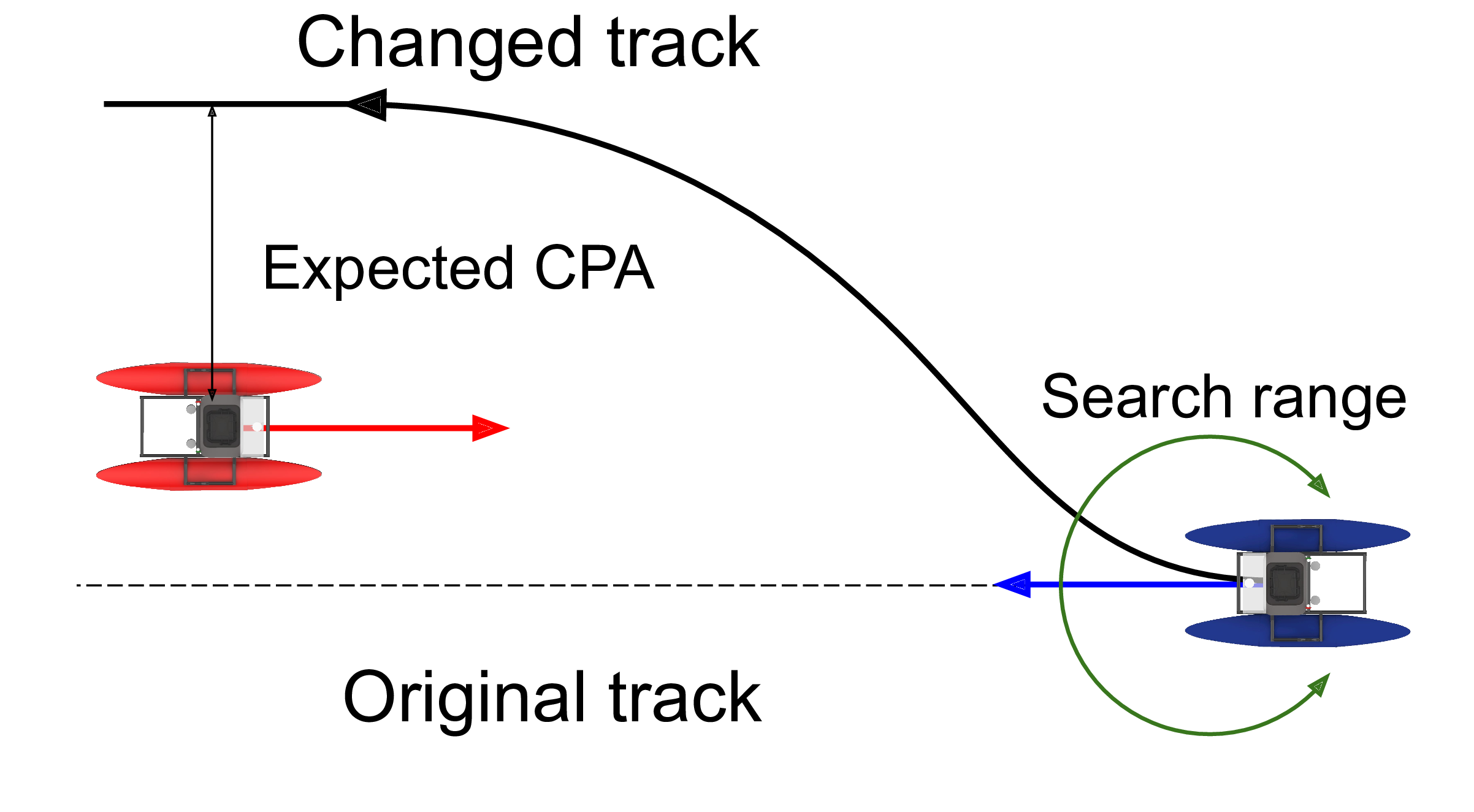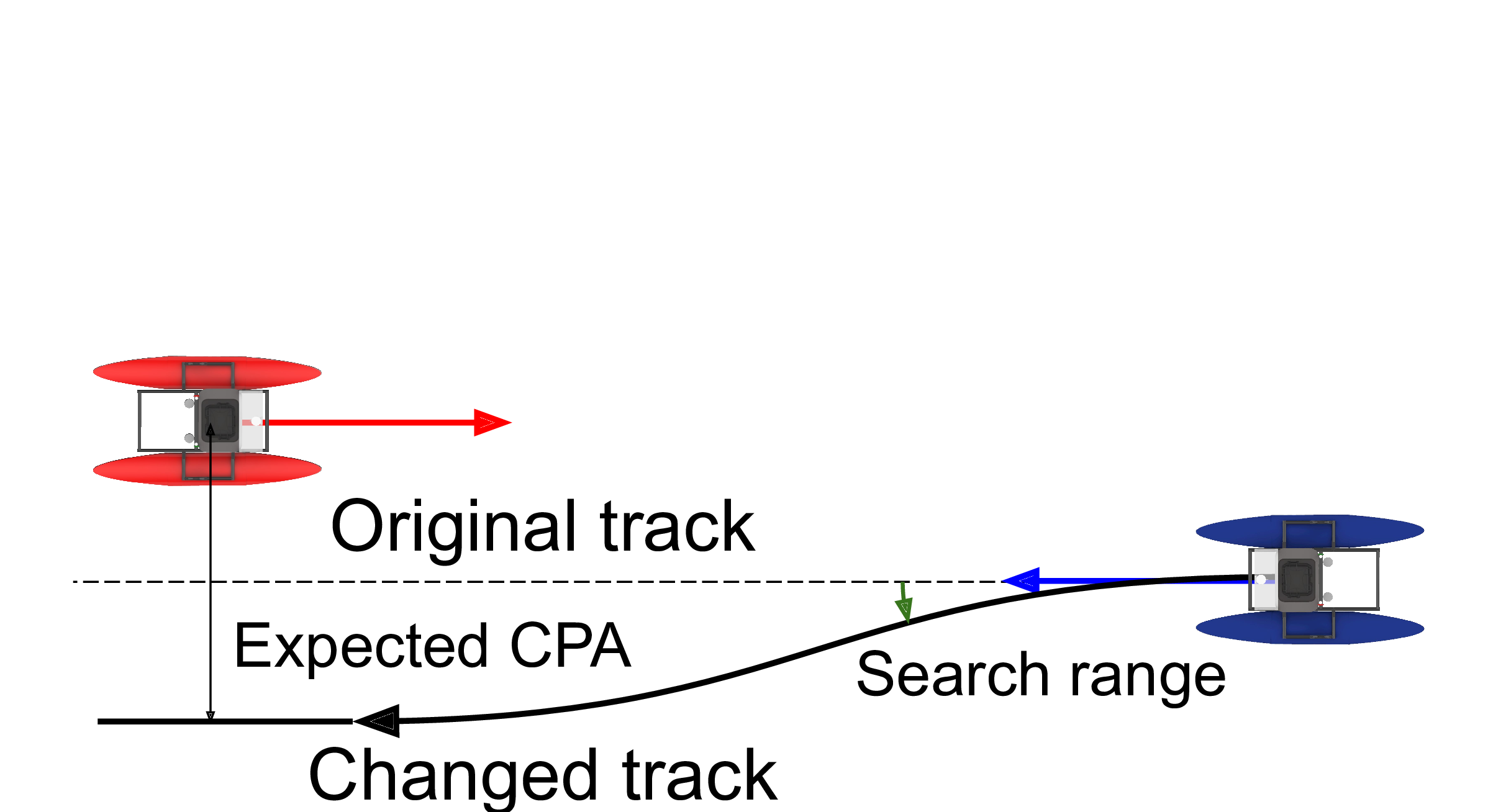Near miss Obstacle Avoidance
Risk vector-based near miss and real-time obstacle avoidance for autonomous surface vehicles
This paper presents a novel risk vector-based near miss
prediction and obstacle avoidance that can be used for
computing an efficient, dynamic, and robust action in
real-time. Simulation experiments with parameters inferred
from experiments in the ocean with our custom-made robotic
boat show flexibility and adaptability to many obstacles
present in the environment.


Obstacle avoidance behaviors from a state-of-the-art COLREG-constrained method keeping a fixed CPA (left) vs.\ our adaptive method (right) able to achieve the same CPA but with less traveled distance, under a head-on scenario.
Here is a video I have presented at IROS2020.